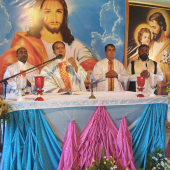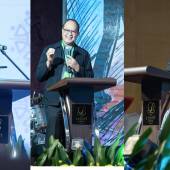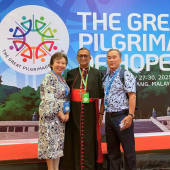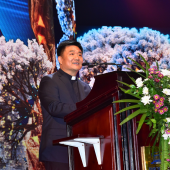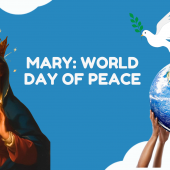Jesus is the Foundation of Mission
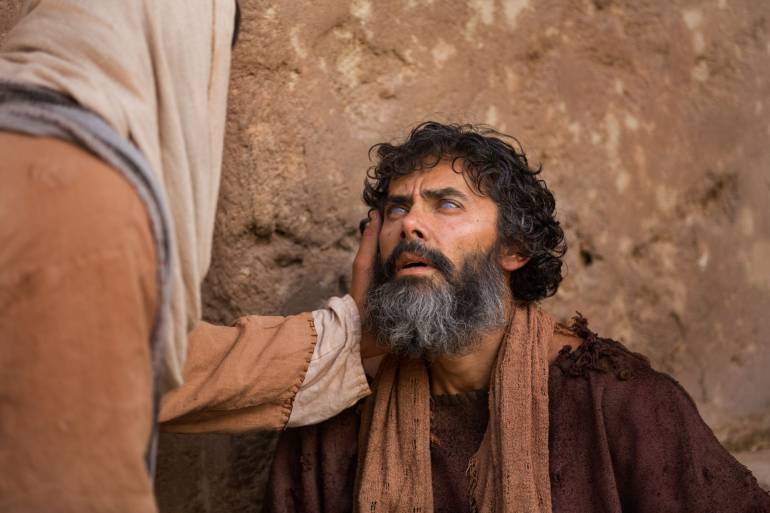
A. Text:
“Therefore, do not be afraid of them. Nothing is concealed that will not be revealed, nor secret that will not be known. What I say to you in the darkness, speak in the light; what you hear whispered, proclaim on the housetops. And do not be afraid of those who kill the body but cannot kill the soul; rather, be afraid of the one who can destroy both soul and body in Gehenna. Are not two sparrows sold for a small coin? Yet none of them falls to the ground without your father’s knowledge. Even all the hairs on your head are counted. So do not be afraid; you are worth more than many sparrows—everyone who acknowledges me before others I will acknowledge before my heavenly Father. But whoever denies me before others, I will deny before my heavenly Father.
B. Exegesis:
1. This Sunday, we are gathered around the sacred Altar to listen to a portion of the Missionary Discourse of Jesus. This was originally addressed to the twelve disciples or apostles of the Historical Jesus. But today, it is addressed to the disciples between the time of the Resurrection and the Parousia.
2. What does Jesus instruct?
The concealed and secret coming of God’s Kingdom has to be proclaimed by His disciples: “As you go, proclaim the good news, ‘The kingdom of heaven has come near” (10, 7).
There will surely be resistance to their proclamation. But fear should not deter their mission. They ought to proclaim it courageously.
3. Yes, the disciples proclaimed with courage. On June 29, we celebrate the Solemnity of Saints Peter and Paul, Apostles.
Of the Apostles, “Simon called Peter” (10, 2) comes first. He proclaimed the end, going as far as the ends of the earth to Rome. He finally took refuge in Rome. For almost 20 years, he found hospitality in many homes, as illustrated below.
4. The Church of Santa Pudentiana was built on the ancient house owned by the Patrician Pudens, a Roman Senator and the father of Santa Pudentiana. The family had provided hospitality to Peter. Later, his two daughters, Saints Praxedes and Pudentiana were martyred.
5. The Church of Santa Prisca, rising on the Aventine Hill and dating from antiquity, was built above the former house of the matron Priscilla and her husband Aquila, who welcomed Peter. This house, cited in the Letters of Paul, was known for giving Peter hospitality. The remains of a Roman house are still visible. He baptized many people in a concave capital, which is conserved inside the right nave of the Church. The Church was dedicated to Santa Prisca, the 13-year-old girl of Priscilla and Aquila, decapitated by Claudio. Her relics are kept in a crypt.
6. The Church of San Pietro in Vincoli preserves the chains that were said to have fettered St. Peter during his imprisonment in Jerusalem. Eudoxiana, Emperor Valentinian III's wife, received these chains from her mother and donated them to Pope St. Leo I. When the Pope set these chains with the ones that had bound the wrists and ankles of St. Peter in the Mamertine Prison, he saw the two chains unite to form a single piece. The chains in Jerusalem miraculously link themselves to the chains that held him in Rome. They are still venerated in this Church.
7. St. Peter baptized his jailors in Mamertine Prison and escaped disguised in an enslaved person’s cape. His feet were bandaged because of the sores from his chains. In-flight along the Via Appia Antica (the Appian Way), known as Regina Viarum (the queen of roads), he lost his bandages where the Church of Santi Nereo ed Achilleo now stands.
8. The Church of Domine Quo Vadis derives its name from the question St. Peter asked the Lord on his escape from the Mamertine Prison and Rome: ‘Lord, whither goest thou?’ Then the Lord replied, ‘Romam iterum crucifigi’ (‘To Rome, to be crucified again’). With this, he returned to Rome to face his martyrdom. The stone on which Jesus left his imprint was preserved in this Church before being moved to La Basilica di San Sebastiano (the Basilica of St. Sebastian).
9. while preaching in Rome, St. Peter was captured, imprisoned, and martyred in 64 AD at Nero’s Circus, crucified head down. He was buried in a pre-Constantine necropolis dating the first through the fourth centuries. The Christian tombs were built around his grave.
Peter’s tomb soon became a shrine where many faithful came to pray so much that following the Edict of Milan (313 AD) that acknowledged the right of Christians to practice their faith freely in the Roman Empire, Emperor Constantine ordered the construction of a basilica on the site. That was how the grandiose basilica rising in all its magnificence on the Ager Vaticanus, namely La Basilica di San Pietro in Vaticano (‘St. Peter’s Basilica in the Vatican’) came to stand on his tomb in Nero’s Circus. It was a sanctuary before 2 c. AD. Then Emperor Constantine ordered the construction of a basilica above the Sepulcher of the Apostle. It underlay the Vatican Grottos of the tombs of popes, emperors, queens, and men of renown. The Vatican Obelisk originally graced Nero’s Circus, silently witnessing the heroic martyrdom.
C. Application:
10. Peter’s heroic martyrdom had a profound influence on the religious and historical destiny of the City of Rome. The blood of the martyrs is the seed of Christianity!
The testimony of this valiant gladiator throws a challenge at us today. Peter professed what Jesus instructed him. He did not wait for human approval or disapproval of the Gospel proclamation. Neither a cross nor shackles could alter what he was deeply convinced of. He feared only God: “And do not be afraid of those who kill the body but cannot kill the soul; rather, be afraid of the One, who can destroy both soul and body in Gehenna” (10, 28).
In a world where our religious rights are grossly violated and our evangelical charity is maliciously interpreted, what strength St. Peter infuses!
11. Furthermore, any more than a foundation of a building cannot be taken away; the position of Peter could have never been absent from the church. Thus the successors of Peter inherited his title, mission, mission, and theory. The papacy was thus born – the logical, legitimate, actual outcome of the primacy of Peter. We, the Church of Christ, are truly blessed to have Pope Francis the Rock and Chief Rabbi devoutly shepherds the flock.
May the heroic example of St. Peter strengthen our hands to work vigorously for the Church, which Jesus built on his sound, rocky foundation!
Radio Veritas Asia (RVA), a media platform of the Catholic Church, aims to share Christ. RVA started in 1969 as a continental Catholic radio station to serve Asian countries in their respective local language, thus earning the tag “the Voice of Asian Christianity.” Responding to the emerging context, RVA embraced media platforms to connect with the global Asian audience via its 21 language websites and various social media platforms.









